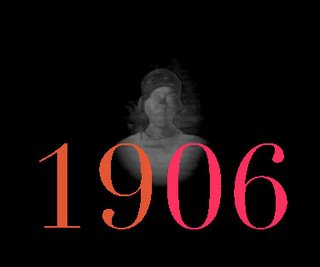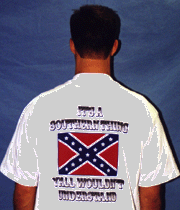(a brief note on) "What Color the Dawn: Breaking Silence on the 1906 Atlanta Race Riot"

Last night (well it was "last night" when I started to write this) I went to see the Opening of What Color the Dawn, the art show curated by Kevin Sipp with Louise E. Shaw, commemorating the Atlanta Race Riot. The exhibition will be at Eyedrum August 19-September 30, 2006, and is sponsored by the Arts and Remembrance committee of the Coalition to Remember the 1906 Atlanta Race Riot, a Truth and Reconciliation project in the city. According to the Coalition website: "During the summer of 1906, white fears of African Americans’ increasing economic and social power, sensationalized rhetoric from white politicians, and unsubstantiated news stories about a black crime wave created a powder keg of racial tension in Atlanta. The powder keg exploded on the night of September 22nd in what became known as the Atlanta Race Riot. By the time the riot ended on September 25th, at least 25 blacks and two whites lay dead." Additionally many were injured and "hundreds fled."
I came late, but artist Toni Bingham, an animated storyteller whose work I hadn't previously seen, and artist/curator Kevin Sipp (whose work is not in the show) were still there. Sipps looked energetic as usual, despite it being towards the end of the four hour reception.
Interestingly photography figured heavily in the work, both documentary photography reconfigured as installation as with Karen Tauches' Disappeared Houses which featured photos on resin with backgrounds of wallpaper designs familiar to many a black southern home, and in the collage work of art historian and artist Michael Harris who included mug shots of Martin Luther King Jr. and Rosa Parks among what looked like blood stains applied to a large scale reproduction of an ad illustration for confederate leaders circa the 1880s.
Bingham's work included photos and pages he found found "fluttering" among the remains of an African American church which was burnt down in 2005. The second part of the work was an installation of memorial posts with burlap, stones, and earth.
Hermina Glass-Avery had multiple installations in the rear exhibition room, including a bottle tree whose containers hold photographs, and a "memory house" at least that's what comes mind. The lighting for Glass-Avery's work was a complementary rust-ochre: simultaneously warm, harrowing, and earth-bound.
Public Domain (Chea Prince/Robert Cheatham), an Atlanta -based non-profit arts collective "which explores the connections between technology, art, theory, and writing" had a single-channel projected video in the exhibition, The Final Race, dealing with the riots and included investigations of UFOs and memory. The video also screened independently the following Sunday evening.
On my way home I stood on a Marta escalator behind a white couple who both wore t-shirts on the back of her's was printed "Redneck Girl" on the back his appeared a confederate flag with the text "It's A Southern thing...Y'All Wouldn't Understand." I wish I had a picture, oh wait, here's one:

On the front it has a small image of the Confederate states with a Confederate stars and bars across it. With text underneath reading "Dixie Forever"
on the Accuracy in Media (AIM) web site that sells this shirt the ad copy reads:
"Save the battle flag from extinction. Show your Southern pride."
Such wording begs the question: whose southern pride? And whose South (i.e.:"Dixie") are we talking about? I never had a question about whether or not this show was necessary, and similar to Cinqué Hicks (who also has some photos from the show) I felt this exhibit worked beyond a simple polemic in addressing a hot button issue. Nevertheless it only took 30 minutes of travel on a relatively deserted MARTA to witness this ubiquitous walking-popular-culture-commentary and the need for various explorations of power, history, and citizenship in the South.

2 Comments:
Oh, I wish I was going to be able to see this show! Thanks for your reflections. I met Kevin Sipp when I was in Atlanta, but didn't get to talk to him after seeing his work. Atlanta has the hotness.
"Such wording begs the question: whose southern pride? And whose South (i.e.:'Dixie') are we talking about?"
That reminds me of the argument that the South *won* the Civil War.
The idea is that in the antebellum South blacks and low-income whites (who were also hurt by widespread slavery since it skewed the supply-demand curve of labor and lowered their potential wages) outnumbered plantation masters and slave traders, so when slavery was outlawed...
Post a Comment
<< Home